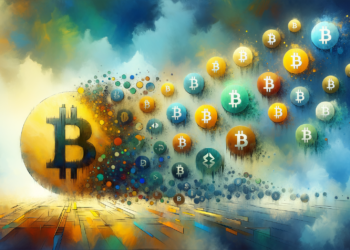The Graph introduces GRC-20 standard for Web3 data structure
The Graph, the decentralized indexing system that works much like Google for blockchains, has introduced a data standard for Web3. Called GRC-20, the standard would define how information is structured, shared, and connected across decentralized applications, according to The Graph’s website in a blog timed to developer Yaniv Tal’s Graph Improvement Proposal.
A new way to view knowledge
The proposal for GRC-20 builds on the concept of knowledge graphs introduced by Tal in June.
“Knowledge is created when information is linked and labeled to attain a higher level of understanding,” the blog explained, and knowledge graphs capture the connections and relationships between pieces of information.
The GRC-20 standard would replace the Resource Description Framework (RDF), which is the current framework for data representation for the World Wide Web Consortium. The RDF is inadequate for Web3 for a variety of technical reasons. According to The Graph’s blog:
“GRC-20 creates a common language for knowledge, so we can fully realize the vision of an open, verifiable and composable web3.”
GRC-20 depends on core concepts of:
“Spaces for grouping information, Entities and Relations for representing individual pieces of data, and Types for adding structure to information.”
Entities, Relations and Types are defined by developers. The Graph will release a set of tools to aid in using the GRC-20 standard in the coming weeks. Tal’s Graph Improvement Proposal is open for comments for an unspecified time before it will be finalized.
Knowledge graph of The Graph. Source: The Graph
Related: Subgraph hosted service launches as The Graph prepares for decentralization
Helping developers find information
The Graph was launched in 2018 and its mainnet went live in December 2020. It is a global open network of application programming interfaces (APIs) referred to as subgraphs that form the basis of decentralized applications (DApps), that is, smart contracts.
Developer Tegan Kline told Cointelegraph at the time, “You can think of The Graph as an open data layer on top of the blockchain,” making smart contracts easier to monitor and use.
Source: Ahmed Abdelmalek
The Graph claimed it could reduce the time needed to develop DApps from months to days. Contributors to The Graph receive Graph tokens ( GRT ). There are over 70 blockchains indexed by The Graph.
Data provider Chainstack launched a hosted service for subgraphs when The Graph stopped hosting them in preparation for its decentralization.
Magazine: Advanced AI system is already ‘self-aware’ — ASI Alliance founder
Disclaimer: The content of this article solely reflects the author's opinion and does not represent the platform in any capacity. This article is not intended to serve as a reference for making investment decisions.
You may also like
Could Stagnant Bitcoin Dominance Herald the Arrival of Altseason?
Signs of an Emerging Altcoin Season as Bitcoin's Market Dominance Dips to 63.3% Indicating Possible Capital Redirection

JPMorgan CEO Jamie Dimon offloads over 130,000 shares worth $31.5 million

